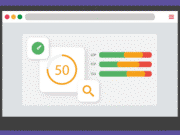Forms play a critical role in the marketing funnel as they help direct engagement with customers and gather valuable data throughout each marketing stage. However, so many businessmen overlook the process of optimizing their forms, which is delaying conversion rates and return on investment (ROI).
In this article, we will discuss the impact of well-designed and optimized forms as powerful drivers across the marketing funnel.
What is the Marketing Funnel?
A marketing funnel visually represents the customer journey from initial awareness to purchase and loyalty. It consists of the following stages:
Top of the Funnel (TOFU)
Top of the funnel (TOFU) or awareness stage is all about introducing the brand, products, or services to customers for the first time through advertising and other promotions. This stage involves marketing efforts like social media campaigns, content marketing, and search engine optimization to capture attention and introduce the product to a wide audience.
“Effective top-of-funnel marketing isn’t just about reaching potential customers – it’s about making a memorable impression. Promotional products excel in this regard by tangibly placing your brand in the hands of your audience.”
Guy Dawson, the CEO of Payless Promotions.
Middle of the Funnel (MOFU)
Middle of the funnel (MOFU) or consideration stage focuses shifts to nurturing the interest of potential customers who are now aware of the brand. At this stage, provide more information to nurture leads by addressing their pain points and presenting content that persuades them of the solution’s value. This can involve more targeted marketing techniques such as email marketing, targeted content (like webinars, and e-books), and retargeting ads, aimed at educating and engaging the audience and guiding them toward making an informed decision.
Bottom of the Funnel (BOFU)
The bottom of the funnel (BOFU) or conversion stage is where marketing efforts are highly focused and personalized, aiming to persuade the potential customer to make a purchase. Here the common tactics involve personalized email communications, special offers, and product demos to encourage the final decision to buy. Leads develop into qualified opportunities ready to purchase. And once the purchase is complete, they become brand advocates.

What is the Importance of Conversion and Lead Generation within the Funnel?
The primary metrics within a funnel are conversion rate and quality lead generation. Conversion rate refers to the percentage of visitors completing a desired action – newsletter signups, content downloads, purchases, etc. Quality leads represent potential customers open to the brand’s solutions.
Higher conversions and lead generation directly translate to business growth. Form optimization boosts these critical funnel metrics across awareness, interest, and decision stages. More signups expand the audience reach.
How Do Forms Serve as Critical Touchpoints at Different Stages of the Funnel?
Forms play a big role across the entire funnel; not only by collecting information but also by helping in lead qualification, which is essential for understanding the readiness of a prospect to make a purchase. Forms also have a very important role in transitioning contacts through each funnel stage. Through the online forms, you can identify leads, understand pain points, and tailor messaging for conversion. Here’s how forms contribute to each stage:
Awareness Stage
In the initial stage, forms are designed to be simple yet effective in capturing basic information about prospects. Here, the focus is on gathering general data such as name, email, and perhaps the industry they operate in. Lead capturing forms like email signups familiarize visitors with the brand. These forms also provide an opportunity to start segmenting visitors based on their interests and interactions, laying the groundwork for personalized marketing efforts.
Interest Stage
In the Interest Stage forms become more detailed, aiming to understand the specific needs and preferences of customers. At this point, forms may include questions about the challenges prospects are facing, and their goals. This is where multi-step forms come into play. They allow for a deeper dive into more data which will be important for segmenting leads and providing them with relevant, personalized content.
For instance, understanding the specific challenges or interests of a prospect allows for more targeted follow-up emails, tailored content creation, and personalized product recommendations. This level of personalization not only improves the chances of conversion but also helps in building a long-term relationship with the customer.
Decision Stage
Decision Stage forms are critical in facilitating the final steps toward a purchase. These forms are often part of product demos and free trials. Usually, they require more detailed information such as budget, timeframe for implementation, or specific product preferences. This is where the information gathered is being analyzed to assess the potential of leads. Forms at this stage might include more targeted questions to determine these factors, helping sales teams prioritize leads and focus their efforts on those most likely to convert.

Top Benefits of Optimized Forms in Detail
Let’s explore the tangible business impact of form optimization across key dimensions:
Exploring the valuable insights and leads obtained through form submissions
Form responses provide a goldmine of first-party data for valuable segmentation. Tracking form metrics reveals customer journey throughout the website. Qualified leads allow tailored nurturing until sales are ready.
How does offering valuable incentives foster goodwill and brand loyalty?
In return for data, brands reward visitors by giving away exclusives like e-books, coupon codes, etc. Customers start to perceive the brand as generous and customer-centric. Such strategies foster customer loyalty as individuals feel recognized and appreciated. This approach creates a sense of belonging among people so they will be, encouraged to make purchases again.
Cost-Effective Marketing
Unlike interruptive ads, lead generation forms adopt a softer “pull approach,” allowing self-selected prospects to willingly exchange data for helpful assets. This is preferable to buying exposure. Cost per lead is lower, delivered leads are pre-qualified, and conversions are higher.
The role of forms in introducing new products to the market
Forms also help launch new products by building pre-launch buzz. Visitor data identifies customer segments to target. Giveaways raise awareness among early adopters willing to sample the new offering before others.
What are the Key Elements of Highly Effective Forms?
So, how to create high-converting forms? Let’s explore crucial elements covering design, user experience, and trust:
Essential form elements, including form length, design, and user-friendliness
Form Length is a critical aspect. A form that is too long may discourage users from completing it, resulting in lower response rates. On the other hand, a form that is too short might not gather all the necessary information. The key is to strike a balance, collecting enough data without overwhelming the user. To achieve this, it’s important to focus on essential questions and consider using multi-step forms for longer surveys, breaking them down into more manageable sections.
Design plays a significant role in its usability and effectiveness for the form. A well-designed form is not only aesthetically nice to the eye but also easy to navigate. This includes clear labels for each field, a logical layout, and a visually appealing interface.
User-friendliness is essential in form design. Such as the ease of understanding the questions, the clarity of instructions, and the simplicity of the input process. Forms should be straightforward to fill out, with fields that are easy to navigate and error messages that are helpful and clear. Also, never forget to make the forms mobile-friendly.

Tips to reduce form abandonment
Bear in mind, that the easier and more engaging the process, the higher the conversion.
- Keep the form as short and simple as possible. Only ask for essential information. If a long form is unavoidable, consider breaking it into multiple steps or pages. Too many fields are overwhelming.
- Multi-page forms should save progress. Especially for longer forms, provide users with the option to save their progress and resume later. This feature is particularly useful for complex forms like applications or surveys.
- Clear field labels and in-line validation ease entry. Provide clear instructions and labels for each field, so users know exactly what information is required. Avoid using technical jargon or ambiguous language.
- Options to toggle between sign-in and guest checkouts accommodate both audiences.
- Smart autofill and prechecked agreements also help drive completion. This can save users time, especially in forms that require address or payment information.
Incorporating trust signals and security features
We all agree that security and privacy are vital. Backed by clear usage policies and PCI compliance, these trust elements reassure users their data is protected.
- SSL badges signal data encryption.
- Explicit permission requests improve opt-in rates.
- Guest checkout and anonymous options allow discretion.
What Data Can You Collect Through Forms, and Why is it Important?
Forms allow the collection of a wealth of customer data that provides valuable insights into leads and how to convert them best.
- Contact details (name, email, phone numbers, company, job title, location, etc.)
- Demographic data (age, gender, income levels, etc.) reveals the audience’s common pain points, which need to be addressed through the solution/s.
- Interests and preferences provide intrinsic motivations to focus messaging and enable sending relevant content recommendations matching individual interests.
- Survey feedback provides direct customer input about their problems, product needs, and suggestions.

Why is Collecting Data so Important?
- Enables personalization: Granular customer data facilitates hyper-targeted 1:1 engagement to accelerate conversion.
- Drives innovation: Direct customer feedback shapes better products aligned to market needs.
- Fuels growth: Rich profiles identify valuable customer segments to retain and upsell.
What is the Role of Form Analytics in the Data-collecting Process?
Form analytics provide the visibility needed to optimize forms for maximum conversions. Tracking user interactions reveals how to improve form completion rates.
Key metrics tracked include:
- Impressions: Total views indicate visibility and reach to the target audience. Low impressions mean inadequate traffic volume.
- Abandonment Rate: High abandon rates signal form design issues or complex workflows causing visitor drop-offs.
- Submission Rate: The percentage actually completing a form shows its effectiveness. Low rates mean suboptimal UX.
- Conversion Rate: Form success can be measured by signups, leads generated, trials started, etc. This evaluates its business value.

How Does Data Segmentation Help in Targeted Marketing Campaigns?
Collected data facilitates the creation of highly targeted customer segments based on common needs and priorities to serve them better. Keyword usage indicates search intent for SEM refinements.
Campaign personalization based on field responses can almost double conversion rates. For example, visitors can be segmented by role (e.g., developer, manager, etc.) using smart forms to deliver matching solutions.
How to Integrate Optimized Forms and Marketing Automation Platforms?
Integrating forms with marketing automation enables the creation of intelligent conversion funnels to nurture visitors. Form field data feeds into customer profiles within ESPs like MailChimp for segmentation. Based on customer interactions, leads can be automatically moved across predefined workflow stages with tailored content.
Workflows can also be time-based; for example, inactive subscribers re-entering the flow through cart abandonment forms. This fusion of forms, data, and automated flows provides a scalable way to increase conversions.
Conclusion

Optimized forms help engage more visitors, convert them into leads, and drive them through to purchase decisions. A data-driven understanding of the audience is vital to building those personalized experiences that compel action. Form analytics provides the feedback loop to improve performance continuously. Used right across the funnel, well-designed forms can directly and measurably accelerate business growth.






